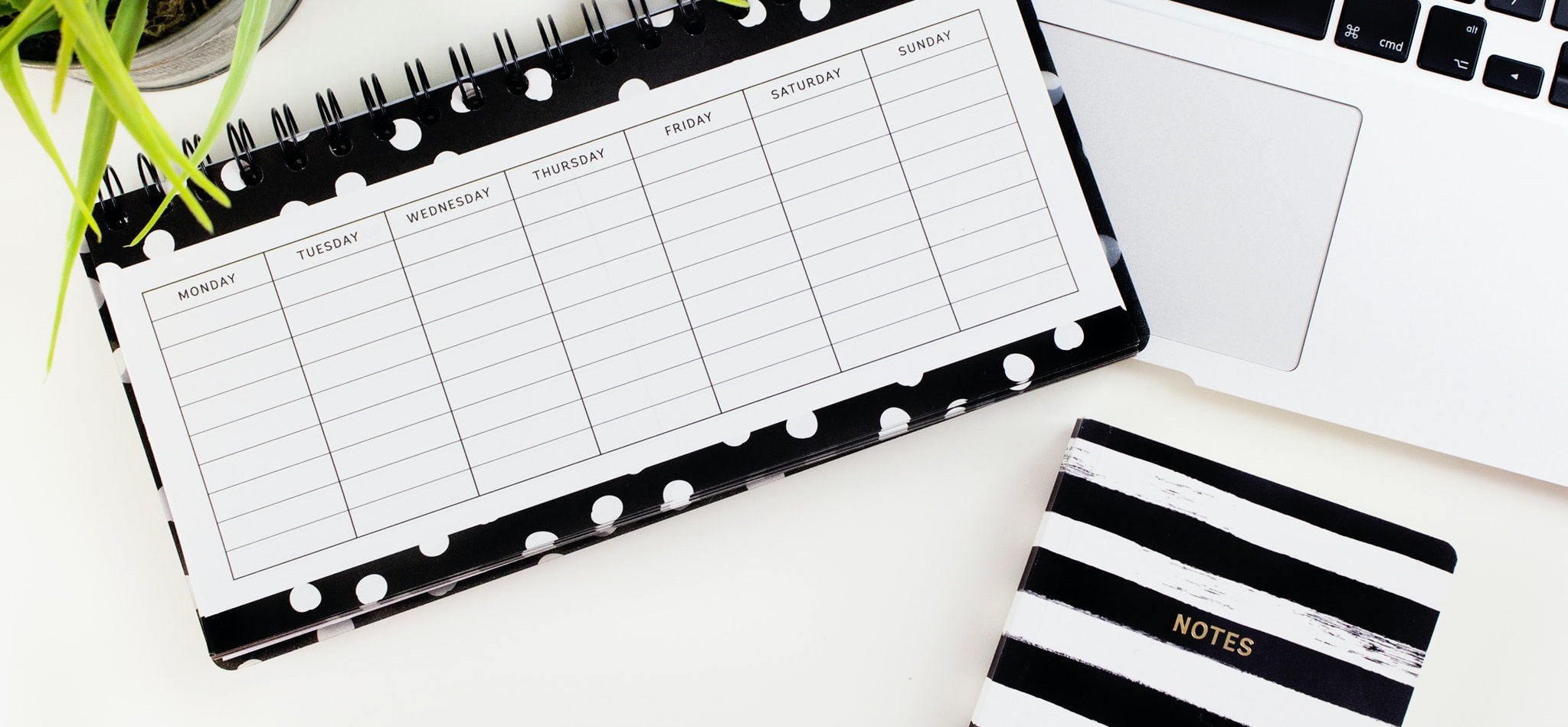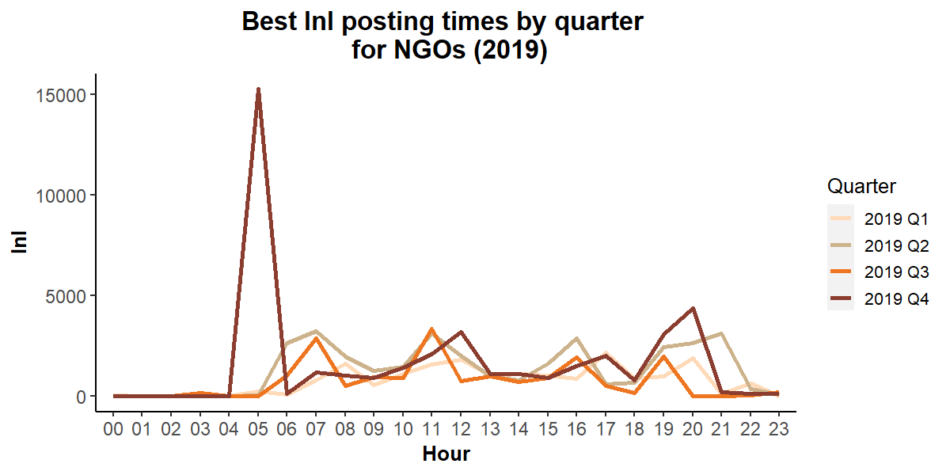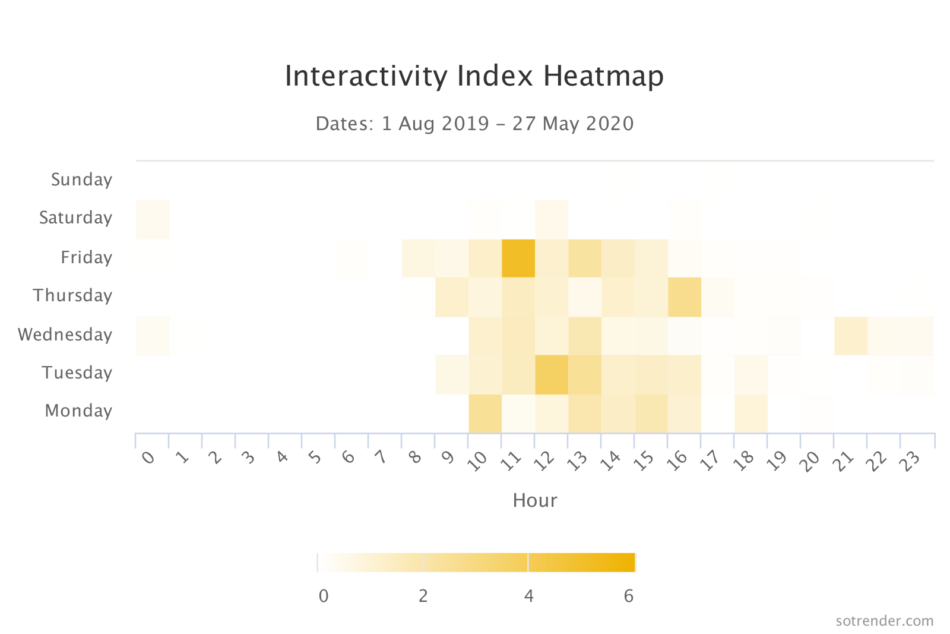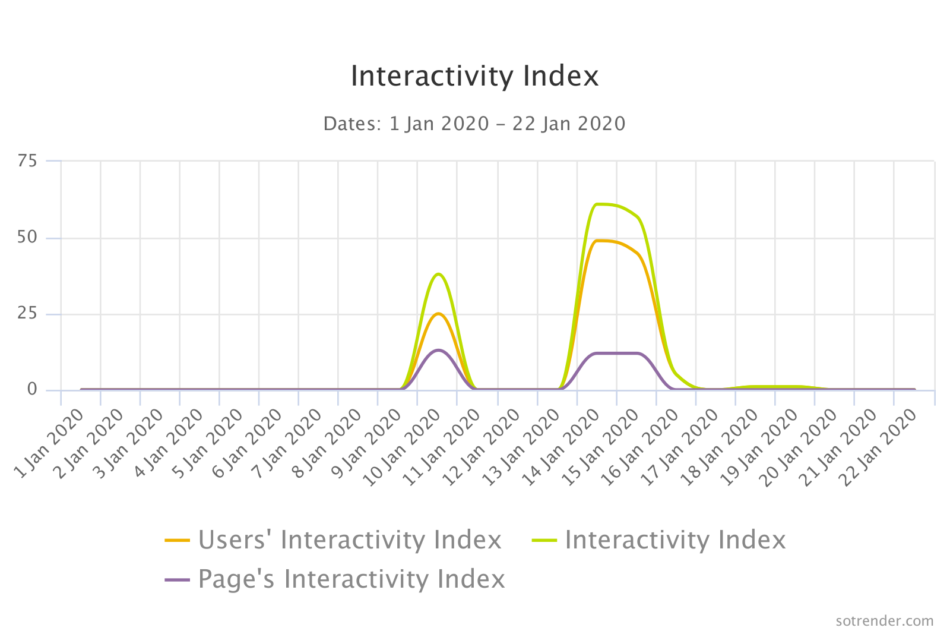You always hear the same phrase, “content is king”, in a hundred different variations. You spend so much time preparing your content strategy, study your audience demographics and interests, and create a whole content calendar just for them. You might even have hundreds of thousands of followers, but low reach and engagement, so what gives? Chances are that you aren’t posting at the right time.
In this article, we’ll give you a brief introduction into the topic as well as a sample of what we discovered. To get access to the full insights, you’ll have to download the eBook. Keep reading to find out more about how you can access that.
Why does timing matter so much? Why do time zones matter?
If your timing is right, the audience that you intended to reach will actually see and get to interact with your content. It doesn’t make sense to upload posts at 21:00 when they’re already getting ready to sleep, or if they aren’t using social media in the middle of the day at work. By taking the time to find out, you’ll know what times of day you should schedule your posts for, without missing a huge part of your audience.
Different companies have done research on the best posting times for various social media platforms, but we’re going to answer a few specific questions:
- What days and time are best for streaming services, NGOs, educational institutions, fashion brands, and cosmetic brands in the UK?
- How do these times differ per quarter in 2019?
- Has anything changed since the start of COVID?
Here’s what we’ve found about their Facebook users’ activity.
How did we collect the data?
We thought we should give you a brief summary of how we got this data in the first place so you know what we’re basing our conclusions on. 🙂 Firstly, we added a variety of UK-specific Pages to our database and collected their data via the Facebook API.
We selected around 10 profiles for each industry and aggregated their results. We were generally interested in their Interactivity Index (InI) scores and when they were posted. By calculating the InI, we would be able to say not only when the most likes occurred, but when the most purposeful interactions occurred such as commenting or sharing the post.
Best posting times for NGOs
NGOs have an important role to play in society. At times, there aren’t enough government institutions that tackle all of the pressing issues that specific NGOs can. Thanks to their work, human and animal rights issues get noticed, and significant changes can come about. Still, they need people’s attention if they want to go about doing that.
Because there are different types of NGOs focused on so many issues, they will attract a diverse audience. We would expect them to be relevant among both students and employees alike. For our research, we included NGOs focused on animal rights, humanism, refugee aid, water aid, and LGBT+ issues.
As it turns out, in 2019, there were days and times that seem to be better than others.
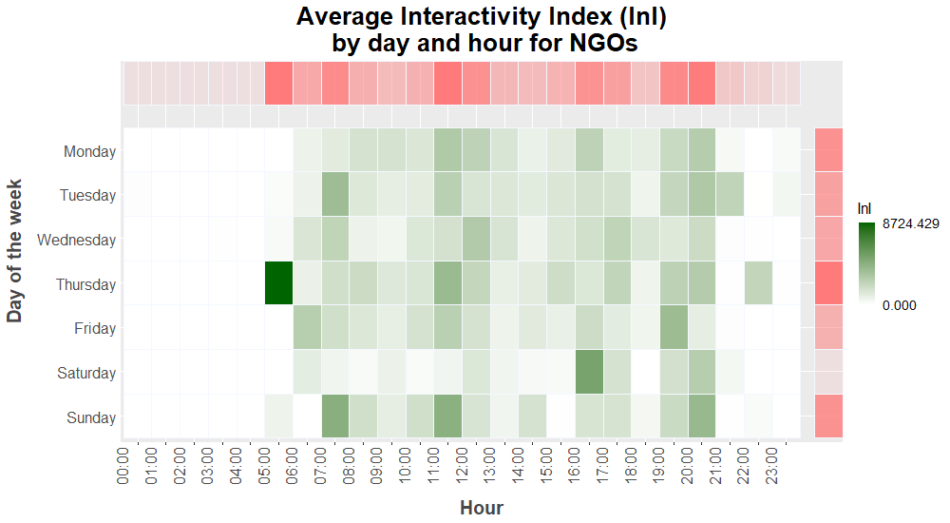
About the graph: the darker the time slots on the heatmap, the higher the activity at the time. Blank or faded greens indicate no or very small levels of activity. The data in the heatmap represents engagement in 2019.
Users that liked NGO Pages on Facebook tend to interact more with their content than those of university Pages. As we might have guessed, there are several days that work well for NGOs.
- The best day to post is definitely Thursday in the morning, followed by Monday
- Other days apart from Saturday are also fine.
- Posting between 6:00 to 21:00 should work on most days
Generally, we find that NGOs should post both in the morning and late afternoon to evening.
NGOs by quarter
Now that you know what days and hours work throughout the week in general, we can check what’s been going on throughout 2019 and compare it to 2020.
- Peaks between 5:00 to 8:00, then from 10:00 to 12:00, 15:00 to 17:00, and 18:00-21:00 across all quarters in 2019.
- Greatest amount of activity occurred in the early morning (between 4:00 to 6:00) in Q4.
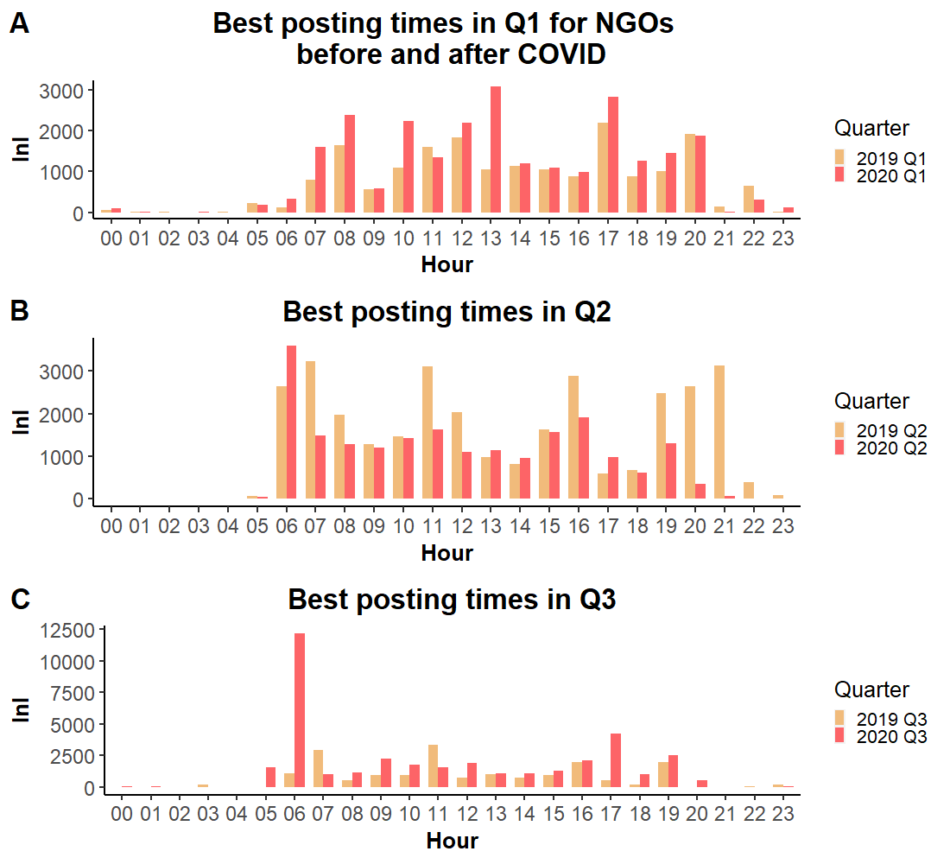
- There’s really not much of a difference between Q1 in 2019 and 2020. Engagement tended to occur between 7:00 and 20:00 in general. The only difference is that in 2020, there was more activity around noon.
- In Q2, the active hours stayed around the same, but a slightly different pattern emerged. NGOs had a few peaks throughout the day in 2019, but that decreased quite a bit in 2020. There was also much more activity going on around 21:00 in 2019, but not in 2020.
- In Q3, there’s a spike where activity is especially high (12.5k InI), but engagement was generally the same as Q2.
We would have to wait and see how activity will change by the end of Q4 this year, but so far, there are some definitive patterns that have emerged.
Possible reasons why times changed for NGOs and what these results imply
There are many explanations for why activity changed during 2020. For one, in Q2 of 2020, many people were getting laid off from work, which likely meant that their attention had to be spent elsewhere. However, this is just one possible reason.
However, we do have a prediction. It’s highly likely that this year, more than ever, people will start to realize how important NGOs, charities, and advocacy organizations are in helping others in times of need. Many governments showed that they were ill equipped to handle some situations, so those NGOs have to become more active, and users will seek them out. NGOs should continue to engage with their communities during the best hours and days with content that sparks conversations.
Since you know how it looks for your industry in the UK, we’ll show you how you can check this for your own Page.
How can I check all of this for my own Page?
When using Sotrender, it’s possible to check all of the same Facebook metrics as in Facebook Insights, but you get a few additional metrics and interactive graphs. As long as you have access to an Insights profile, you’ll be able to look at some specific metrics.
You can check how your audience changed over time in terms of demographics, how different types of reach are performing, and which content they respond to.
Here’s how you can tell when you should be posting on your own Page.
And if you’re interested in InI specifically, you can check your own Page’s InI in the Reach and Engagement section.
Using the app, you can click on the specific peaks to see what post got the most or least attention. That’ll save you time in scrolling through your Facebook Page and keeping track of reactions and comments. Better yet, if you’re in a rush to create a presentation or report to summarize activity, you can quickly generate a report in just a few minutes, or set up a recurring report.
If you want to check out the rest of our results for streaming services, educational institutions, fashion, and cosmetic brands, fill out the form below to get access. 😉
Timing matters
With more users becoming active on Facebook, it makes sense that their pattern of activity will change. To consistently get your audience to notice your posts, you need to keep up with when they are active during the day, week, and year in general. Improving reach and engagement means that your fans are invested in your content and brand, organization, or institution.
With special thanks to Urszula Baranowska and Maciej Baranowski for their help!
